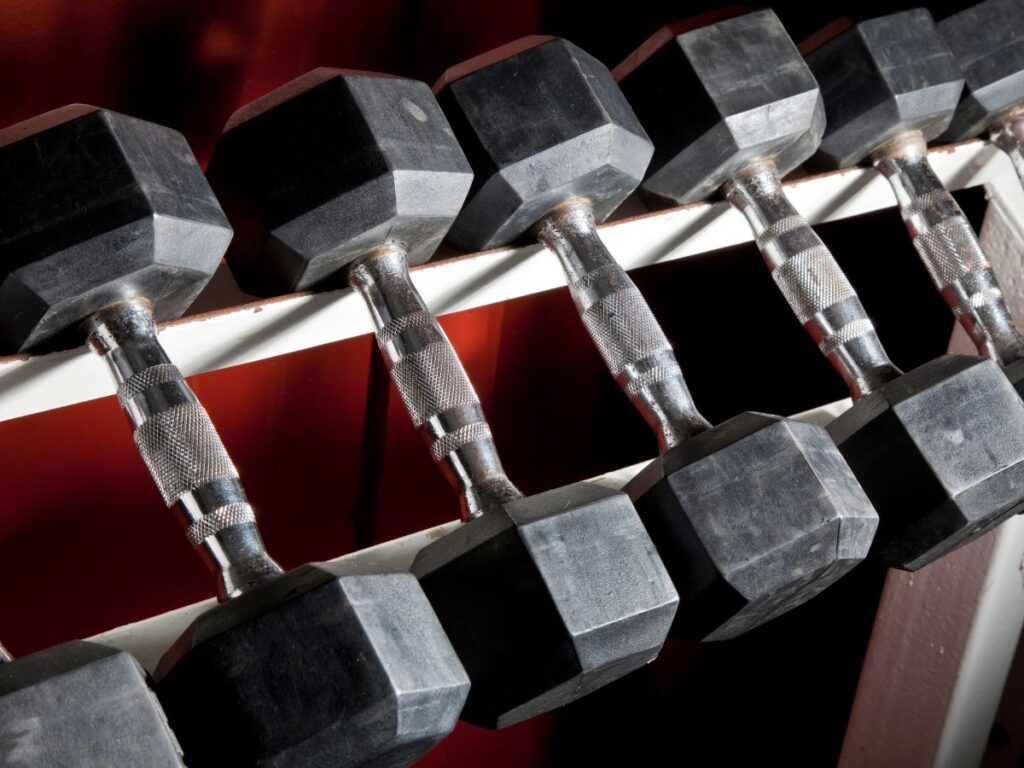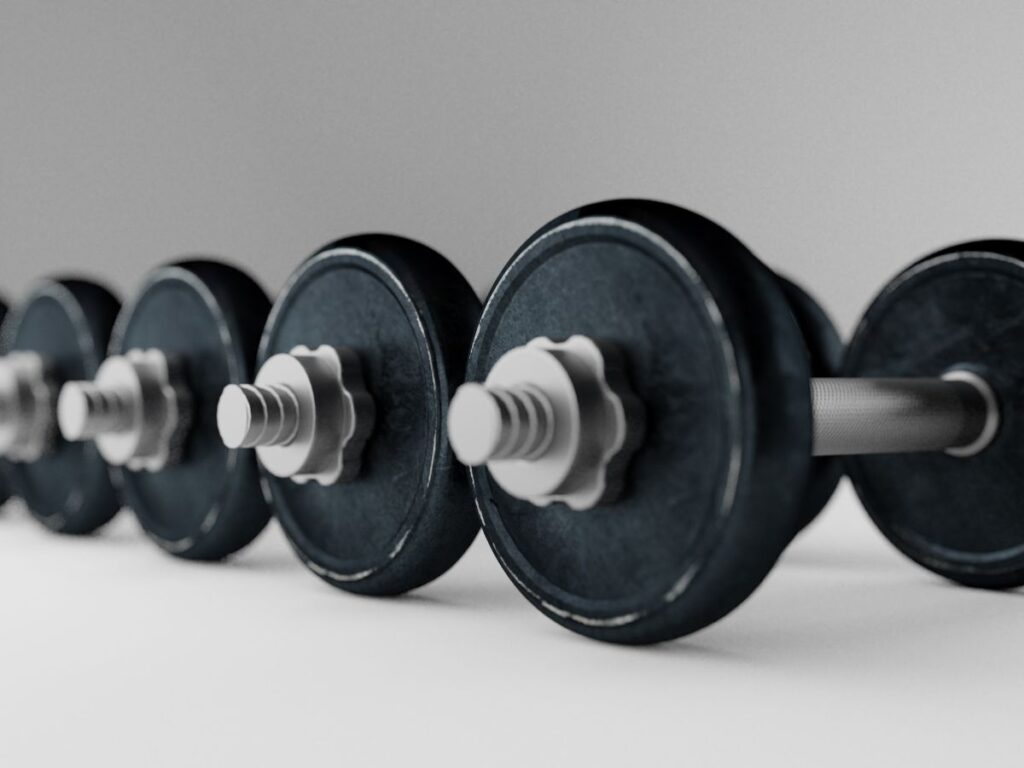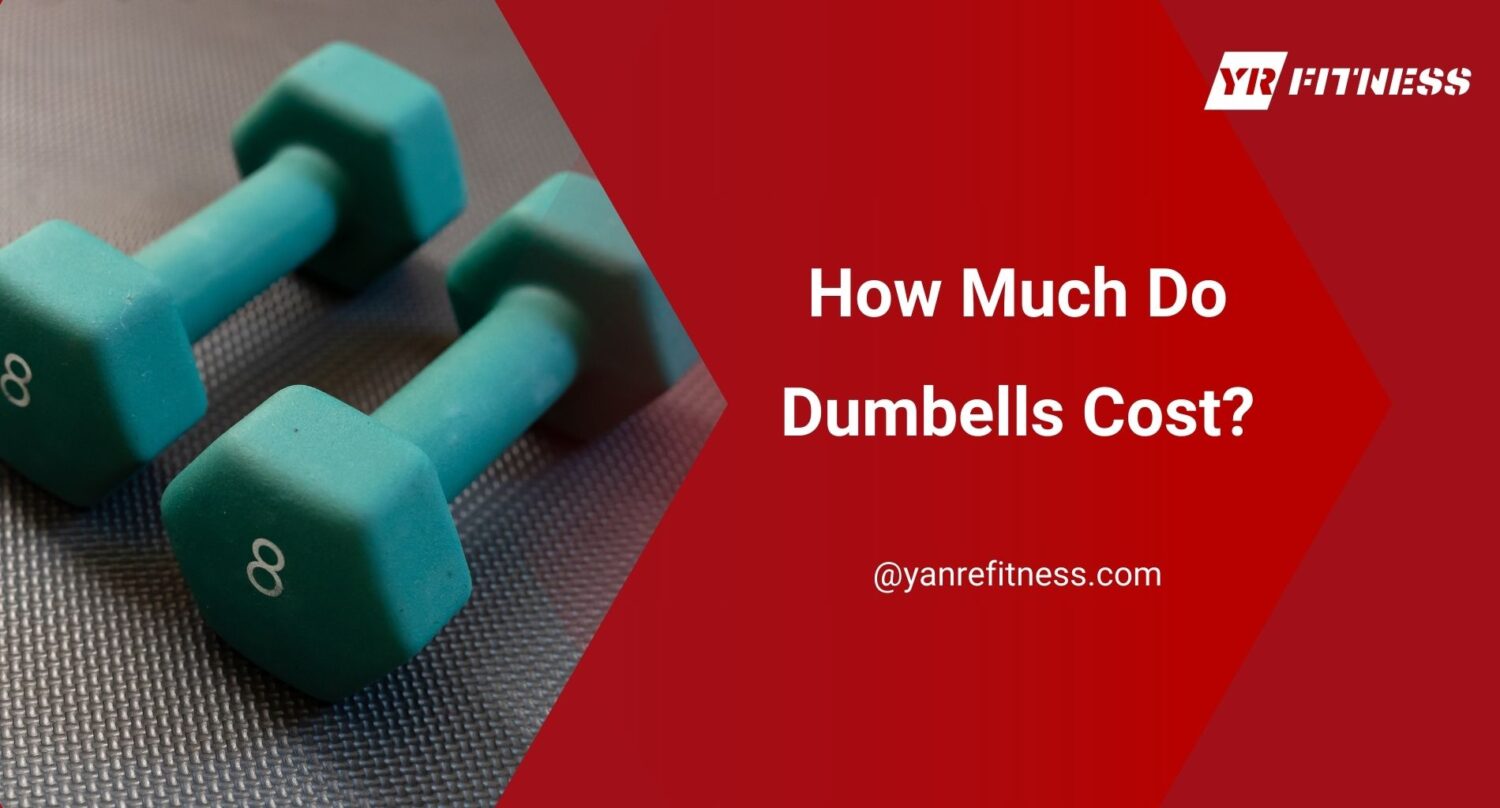The first time I priced dumbbells for a client’s training studio, I had to double-check the invoice. How could something that small cost hundreds?
That moment pushed me to dig deeper into what really drives the price.
After years of handling equipment orders for gyms and school programs, I’ve learned what’s worth paying for, and what’s not.
This isn’t a generic price list, it’s an informed breakdown from someone who’s been through it.
This article will walk you through the factors that change dumbbell prices, from materials to manufacturing origin.
Let’s start!
Table of Contents
1. Average Dumbbell Price Range
Dumbbell prices vary more than most people expect. I’ve learned that it’s not just the weight that drives the cost, it’s the material, coating, durability, and how well it holds up in a busy setting. If you’re planning for a gym, school, or training facility, knowing the average range upfront can save you from surprises later.
Here’s a quick overview of what you can expect:
Dumbbell Type | Price Per Pound | Typical Use | Pros | Cons |
Cast Iron | $1.50 – $2.00 | Basic setups, low-humidity spaces | Budget-friendly, simple design | Prone to rust, louder on impact |
Rubber-Coated Hex | $2.00 – $3.00 | Schools, commercial gyms | Floor protection, less noise | Rubber may crack or degrade over time |
Urethane-Coated | $3.00 – $5.00 | High-traffic commercial or boutique gyms | Durable, long-lasting, sleek appearance | Higher upfront cost |
Adjustable Dumbbell Sets | $500 – $1,500/set | Studios or small spaces with limited floor area | Space-saving, wide weight range in one set | Slower weight changes, not ideal for group use |
Full Dumbbell Racks | $1,000 – $5,000+ | Full-scale gyms or multi-user facilities | Easy access to a full range of weights | High initial cost, needs proper storage space |
2. Factors That Influence Dumbbell Prices
Dumbbells might look simple, but their price tags can tell a different story. If you’ve ever compared two similar-looking sets and found a big cost gap, there’s a good reason. Knowing what drives up or cuts down cost can help you avoid paying for things you don’t need, or missing features that really matter.
Material and Coating
The material and outer finish have one of the biggest impacts on price. Cast iron is the most affordable but can corrode easily in damp environments. Rubber-coated dumbbells cost a bit more but protect your floors and reduce noise. Urethane-coated options are the most expensive but hold up longer in high-traffic areas. The better the coating, the more you’re likely to pay upfront, but it may save you from early replacements.
Weight Range and Increments
Larger dumbbells cost more, not just because of the added weight, but because of how they’re produced and shipped. You’ll also notice price jumps if you’re buying in smaller increments like 2.5 lbs instead of standard 5 lb steps.
A full rack from 5 to 100 lbs in 5 lb increments will cost less per pound than a highly customized setup. If your users need gradual weight progression, the added cost might be worth it. But if not, sticking to standard sets keeps your pricing manageable.
Brand and Manufacturing Origin
Some brands carry a higher price tag simply because of reputation, and in some cases, it’s justified. Well-known manufacturers often offer longer warranties and better build quality. You’ll also pay more for dumbbells made in the U.S. or Europe versus imports from Asia. Higher labor and production standards tend to raise costs, but they often come with tighter quality control too.
Handle Design and Grip
Not all handles are built the same. Knurled chrome handles offer better grip and durability, especially during heavier lifts. Ergonomic handles with slight curves can improve comfort but also increase production complexity, which adds to cost. Cheaply made handles may look fine at first but can wear down fast in commercial use.
Durability and Warranty Coverage
The build quality of the dumbbell, including how securely the heads are attached, impacts both performance and pricing. Welded or bolted ends can fail if they’re poorly assembled, while single-piece designs usually last longer.
Some manufacturers also offer multi-year warranties, and the longer the coverage, the higher the price. If you’re operating in a space where equipment gets heavy use, it’s smart to weigh warranty coverage into the total cost. It’s not just about how much you pay, it’s about how long it lasts.

3. Hidden Costs to Watch Out for When Purchasing Dumbbells
The base price of dumbbells is only part of the story. I’ve seen many businesses underestimate the total cost by overlooking a few key details that don’t show up until after the invoice is signed. These hidden costs can throw your budget off if you’re not prepared.
- Freight and Shipping Fees: Dumbbells are dense and heavy, so shipping charges often add up fast, especially for long distances or bulk orders. It’s not unusual for freight to add 15–25% to your total cost.
- Rack and Storage Equipment: Most dumbbell sets don’t include storage, and racks can cost hundreds on their own. YR Fitness offers compatible rack systems designed for commercial use, which can help streamline your setup and improve safety in high-traffic areas.
- Flooring Damage and Protection: Rubber mats or reinforced flooring are essential if you’re using cast iron or heavy dumbbells. Replacing damaged floors ends up costing way more than preventive protection.
- Assembly and Setup Costs: Some commercial dumbbells arrive unassembled or require manual sorting, especially in bulk shipments. You might need staff hours or outside help to get everything organized and safely in place.
- Warranty Gaps and Replacement Issues: Cheaper dumbbells may come with minimal or no warranty, and replacement parts might not match exactly. Over time, mixing mismatched pieces on your floor can affect aesthetics and user experience.
- Import Duties and Tax: If you’re sourcing from overseas, additional taxes or customs duties can sneak in unexpectedly. These charges aren’t always quoted upfront, so it’s important to ask in advance.
These extras don’t always show up on product listings, but they’ll show up on your final bill. Factoring them in early will help you avoid unnecessary surprises and keep your budget under control.

4. Current Market Trends Impacting Dumbbell Prices
If you’ve been pricing dumbbells lately and noticing inconsistent numbers, there’s a good reason for it. Market shifts over the past few years have affected how manufacturers price, stock, and deliver these products. For businesses buying in bulk or planning long-term equipment investments, staying aware of these trends makes a real difference.
Material Costs and Manufacturing Challenges
The cost of raw materials like steel, rubber, and urethane has gone up across the board. Add in rising labor wages and energy bills, and manufacturers are dealing with tighter margins. Some have passed those increases directly to buyers, especially on heavier weight ranges.
Others have cut back on variety, offering fewer models to streamline costs. If you’re ordering large sets, you’ll feel these changes more than someone buying a few pairs.
Post-Pandemic Supply Chain Adjustments
The pandemic created massive supply chain backlogs, and many suppliers are still working through them. Shipping delays, container shortages, and warehouse constraints pushed prices up and made fulfillment slower. Even now, lead times can stretch out unless you’re buying in-stock inventory.
Because of that, many businesses are ordering earlier or settling for what’s available, not necessarily what they want. It’s changed how and when commercial buyers plan equipment upgrades.
Domestic vs. Overseas Sourcing Shifts
More brands are shifting manufacturing to domestic or nearshore facilities to avoid international delays and tariffs. While that helps with speed and quality control, it also raises production costs. Dumbbells made in the U.S. or Europe typically come at a higher price but may offer stronger warranties and faster turnaround.
On the flip side, importing from Asia may still be cheaper, but longer shipping times and added duties could offset the savings. Your sourcing strategy now matters more than ever if you want to control costs.
5. How to Choose the Right Dumbbells for Your Business Needs
Picking the right dumbbells isn’t just about finding something that looks good on a rack. I’ve worked with enough gyms and training facilities to know that the “right choice” varies depending on who you’re serving and how often they’ll use the gear. These four areas are where I usually focus the conversation.
Know Who Will Be Using Them
The needs of high school athletes, general gym-goers, and rehab clients are all different. If you’re buying for strength training or sports performance, durability and heavier ranges are key. For casual users or light training programs, mid-range rubber-coated dumbbells are often more than enough. The more varied your user base, the wider the weight range you’ll need.
Choose the Right Weight Range
It’s easy to overestimate what you need. A lot of buyers go for 5 to 100 lbs by default, but many sets above 60 lbs barely get touched unless you’re catering to powerlifters or seasoned athletes. If your workouts are more functional or group-based, a 5 to 50 lb range might cover 90% of your use. That kind of scaling can cut your spend in half without affecting performance. Always look at your actual training programs before deciding.
Plan for Space and Storage Early
Dumbbells take up more room than people expect. Before you buy, think about whether you have space for horizontal racks or if vertical storage makes more sense. Adjustable dumbbells can be a great alternative if floor space is tight, but they’re not ideal for group workouts. For small studios or mobile trainers, exploring other space-saving strength equipment can help balance functionality and layout efficiency. Poor storage planning leads to messy setups, wasted space, and more wear and tear.
Balance Quality with Budget
Everyone wants high-end gear, but not every space needs it. Urethane dumbbells are great for long-term durability and aesthetics, but they’re also the most expensive. If your volume is low or moderate, YR Fitness gives you solid value without the premium price. Think about where you can save, and where it’s smarter to spend a little more upfront.
6. Tips for Negotiating Better Deals on Dumbbells
Even with solid planning, dumbbells can take up a big chunk of your equipment budget. But there are ways to cut costs without compromising quality, especially if you’re buying in bulk or outfitting a new space. I always look for these negotiation points when helping clients get more value for their money.
- Bundle With Other Equipment: Suppliers are more flexible on price when you’re ordering more than just dumbbells. If you’re also getting benches, racks, or flooring, ask for a combined quote with bulk pricing.
- Ask About Overstock or Floor Models: Some distributors keep demo sets or excess inventory that they’re willing to sell at a discount. These pieces are often in great shape and can save you 20–40% off retail.
- Negotiate Freight or Local Delivery: Shipping costs add up fast, especially on heavier orders. Some vendors are open to reducing or waiving freight if you meet a certain purchase threshold or are located nearby.
- Request Volume Discounts; If you’re buying multiple sets or equipping several locations, mention that early. Many suppliers have tiered pricing that’s not advertised upfront, and they’ll open up better rates when they see the full scope.
- Order at the Right Time: Avoid peak buying seasons like January or early summer when prices tend to rise. Ordering in Q2 or Q4 often gives you better availability and more room to negotiate.
- Build Relationships With Reps: Having a go-to rep means better service and early heads-up on sales or inventory changes. When you work with the same supplier over time, they’re more likely to offer favorable terms and loyalty perks.
Conclusion
Dumbbells aren’t just numbers on a price list, they’re a real investment.
Whether you’re buying for a school, gym, or training space, this article gave you the clarity to make the right call.
Now it’s your move. With the right partner, you can stretch your budget without cutting corners.
That’s what we help our clients do every day at YR Fitness.
Contact us today and let’s talk options that fit your goals.
Related articles:






